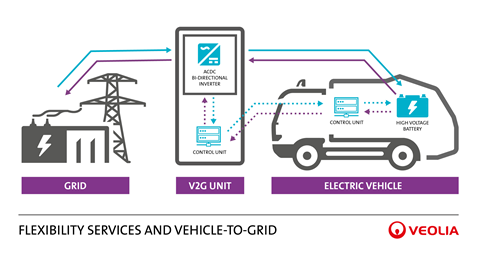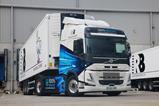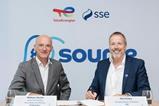At the “Deep Dive Energy” event in London, Veolia has introduced vehicle-to-grid (V2G) technology. This development enables waste collection trucks to contribute stored energy from their batteries back to the grid, potentially powering homes across the UK.

Veolia, the largest waste collection fleet operator in the UK, has outlined plans to electrify its entire fleet of 1,800 Refuse Collection Vehicles (RCV) by 2040. This transformation aims to provide the grid with approximately 200MW of flexible power capacity on a daily basis. This is equivalent to the evening peak energy demand of over 150,000 homes, thereby supporting the country’s energy security.
Given the anticipated doubling of electricity demand in the UK by 2050 and the government’s objective to decarbonise the National Grid by 2035, batteries play a crucial role. Not only can they recharge from the electrical grid, but through V2G, they can also feed back stored energy to the grid. This capability becomes significant during peak demand periods, contributing to grid stability by regulating frequency and voltage, and storing excess renewable energy for later use.
Veolia’s approach stands out by applying V2G technology to waste collection vehicles, which are well-suited for this purpose due to their larger batteries, six times the size of an average car’s, and the fact that the fleet is typically parked during peak energy consumption times for the National Grid.
The initial phase of the trial, conducted by Veolia, has proven successful, with 110kW of energy being charged and discharged from two specially designed bi-directional vehicles. This amount of energy is sufficient to power 110 households for over two hours during peak evening hours. Veolia now plans to expand the trial and conduct on-road tests, utilising Westminster council collection vehicles to pilot the innovation.
Additionally, Veolia aims to maximise the use of local decarbonising energy from its waste-to-energy plants to power its vehicles, creating a circular loop. This includes the Landmann Way vehicle depot in North London, powered by low-carbon electricity from the SELCHP plant.

For this project, Veolia has collaborated with partners including electric vehicle Charger manufacturer Turbo Power Systems (TPS), vehicle repower experts Magnetic Systems Technology (MAGTEC), and ev charge point management software provider Fuuse, with support from technology provider Advantics.
Veolia’s track record in innovation includes the operation of 10 Energy Recovery Facilities in the UK. These facilities transform approximately 2.3 million tonnes of non-recyclable waste into electricity for over 400,000 homes, contributing to the country’s electrical grid while avoiding the use of fossil fuels for generation. Some facilities also provide heating for communities through district heating networks, utilising combined heat and power technology.


















